Patterns of Memorialisation
One of the patterns that has become clear as we gather material from around Wales for the ‘Welsh Memorials’ project is that patterns of memorialisation can be local. That is, particular communities in certain areas will have the same kinds of memorials to those who served in the First World War.
One example can be seen in the nonconformist chapels of Morriston. Another blog post looks at these in more detail – look at how similar the various chapel memorials are.
These five memorials have all been designed by the same man, and they all have an image of the chapel building to the fore, flanked by the Union flag and the Welsh dragon.
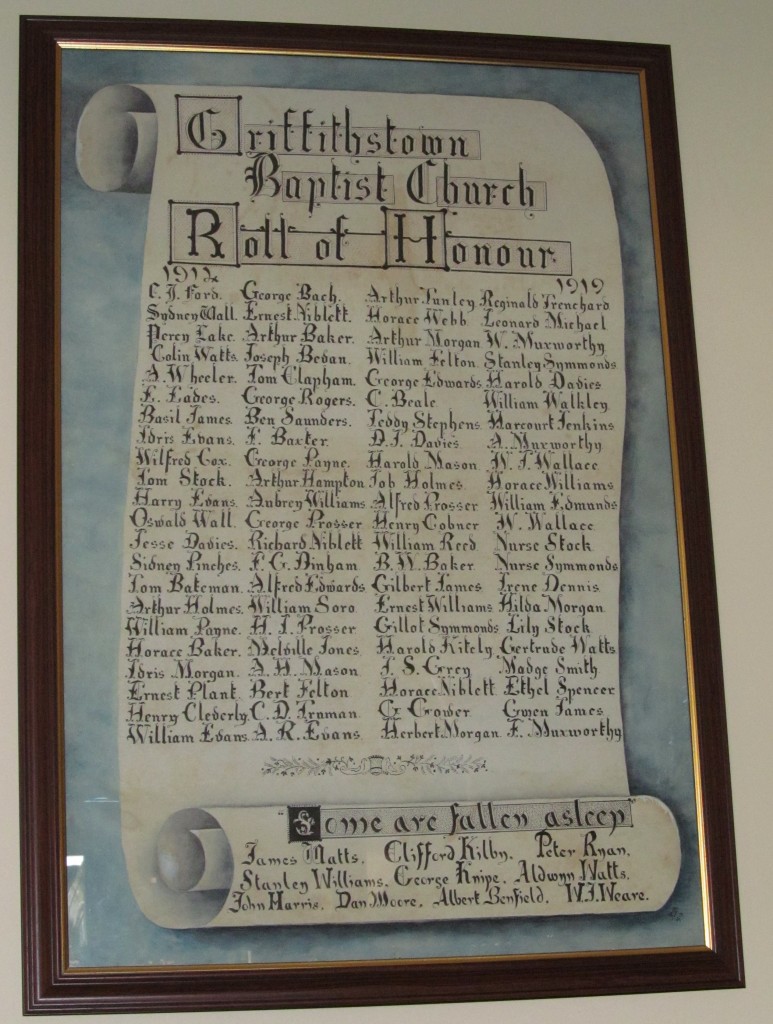
Another patch of Wales where a number of interesting chapel memorials have survived is the Pontypool area. Below are five examples of memorials from Baptist chapels in the area which, although different in design, share some important features.
The memorial in Ebenezer Baptist chapel, Griffithstown (south of Pontypool), was designed by Mrs K. Davies, the minister’s wife, and was unveiled in March 1919. It lists the names of 78 men and then ten women who served, and then names the ten men who died on active service. (The final woman on the list is F. Muxworthy: this is almost certainly Frances Muxworthy of Kemeys Street, Griffithstown, who served with Queen Mary’s Army Auxiliary Corps. This also suggests that two of the men listed are her brothers, Arthur and William Muxworthy).
In Merchant’s Hill Baptist chapel, Pontynewynydd, a Roll of Honour was unveiled in 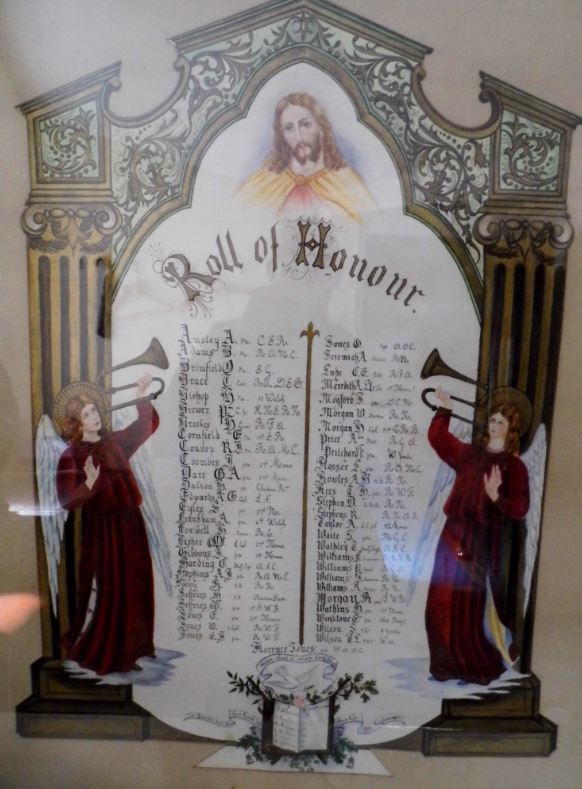 October 1919, naming five men who died, and 47 men and one woman who served.
October 1919, naming five men who died, and 47 men and one woman who served.
There is also in this chapel a memorial which names six men and one woman who died.
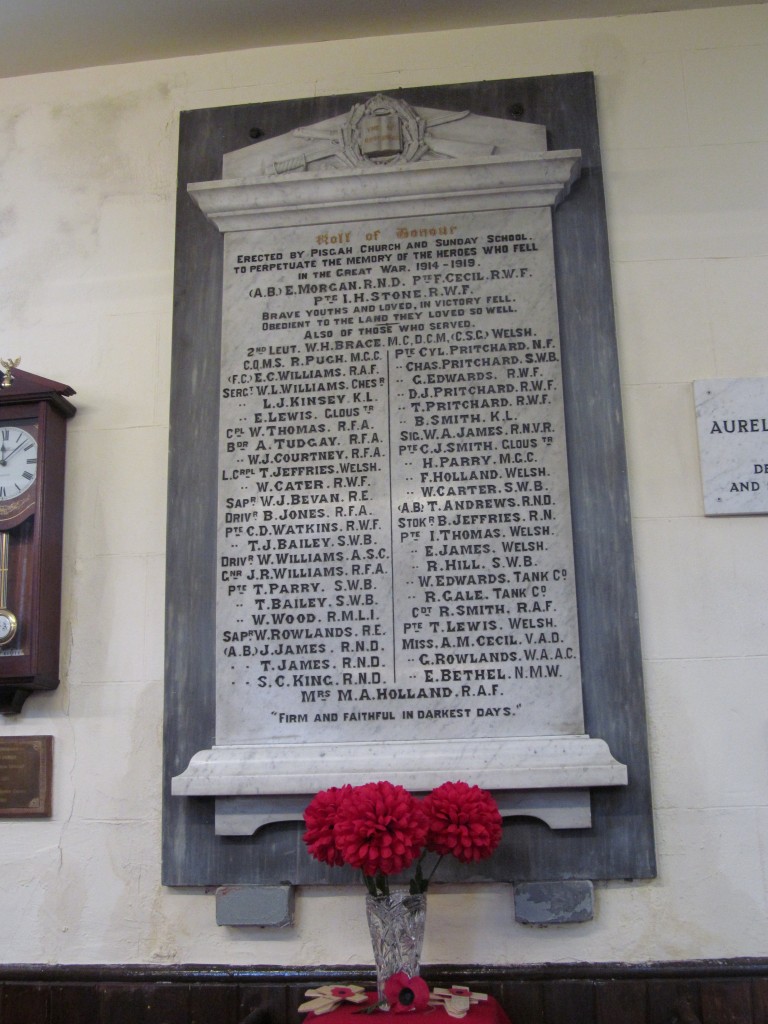
Moving north of Pontypool to Talywain, there is Pisgah chapel. Here the memorial is in marble, and it lists three men who were killed in action, and then gives the names of 44 men and four women who served.
Just down the road in Abersychan there is the High Street English Baptist chapel.
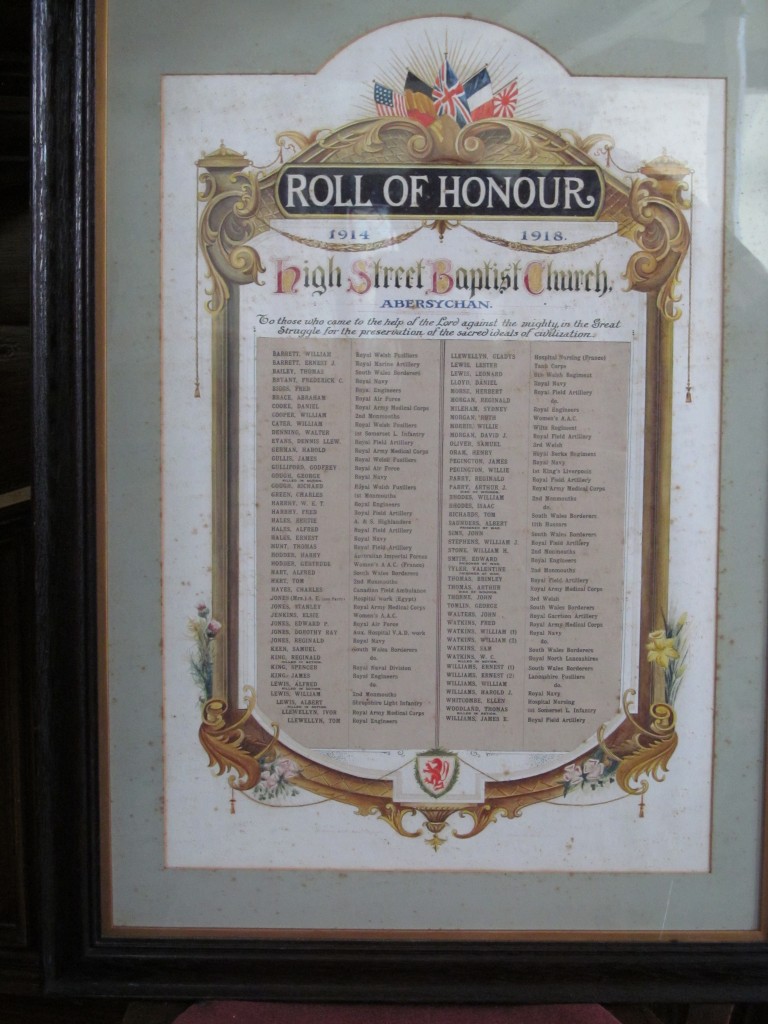
The list here is alphabetical (unlike the list in the others mentioned here) and it contains 85 names, including seven women. Eight of the men were killed in the war.
On prominent display in the chapel there is also a marble tablet celebrating the peace that came at the war’s end.
A stone’s throw away from High Street chapel is Noddfa, yet another Baptist chapel. The memorial here lists seven men who died and then the names of 53 other men who served and six women.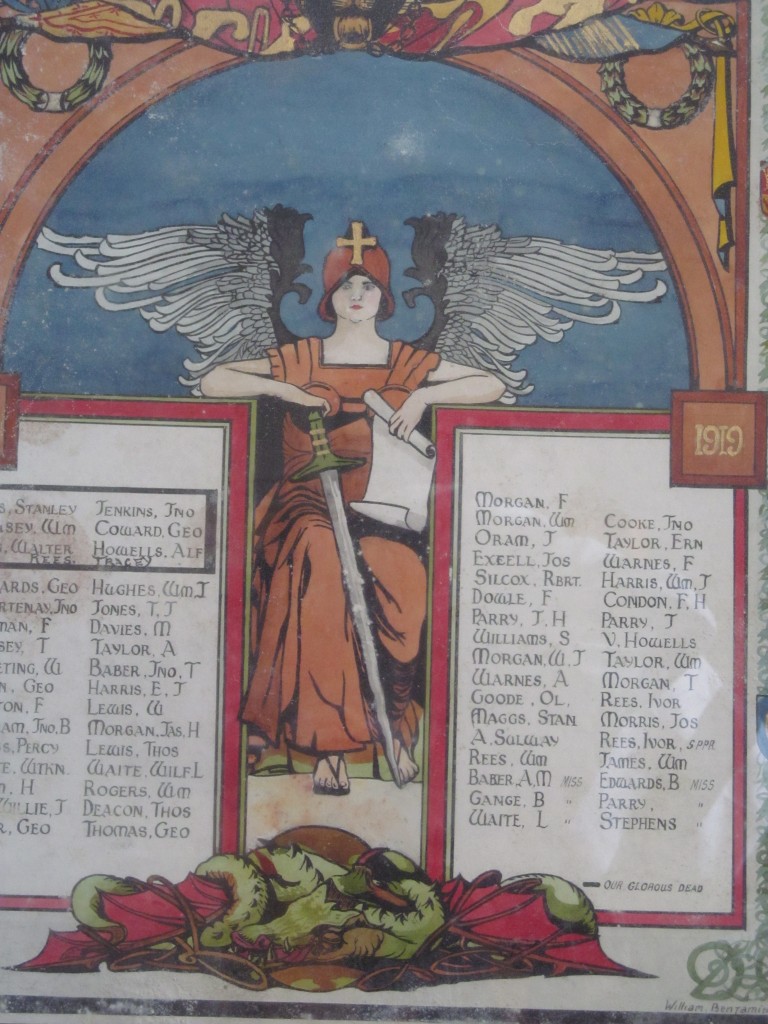
In visual terms, this is obviously the most striking of the five. The memorial, designed by William Benjamin John of Abertillery, has some very strong symbolism. The central figure is an angel; above is a lion with chains in its mouth; at the bottom is a slain dragon. This is probably the most vivid image of a chapel memorial so far collected by the ‘Welsh Memorials’ project.
Having noted the differences in the appearance of the four memorials described, it is also worth dwelling on their similarities. All of these memorials honour those who served, as well as mourning those who died. (Around a half of the Welsh chapel memorials so far gathered are Rolls of Honour which list all who served). All of these memorials name the women who served (mainly as nurses, but also in units such as the Women’s Army Auxiliary Corps) – whereas in general only around a third at most of Welsh chapel Rolls of Honour include the names of women.
Perhaps there is a case of imitation here, or maybe we could even say competition. The chapels were proud of their communities’ contribution to the war effort and they wanted to demonstrate it. Thus as well as the clear motivation of honouring those who served in the war, there was also an element of pride in both the execution of the memorial and in the length of the list of chapel members who had ‘done their duty’.
g.h.matthews May 9th, 2016
Posted In: Uncategorized
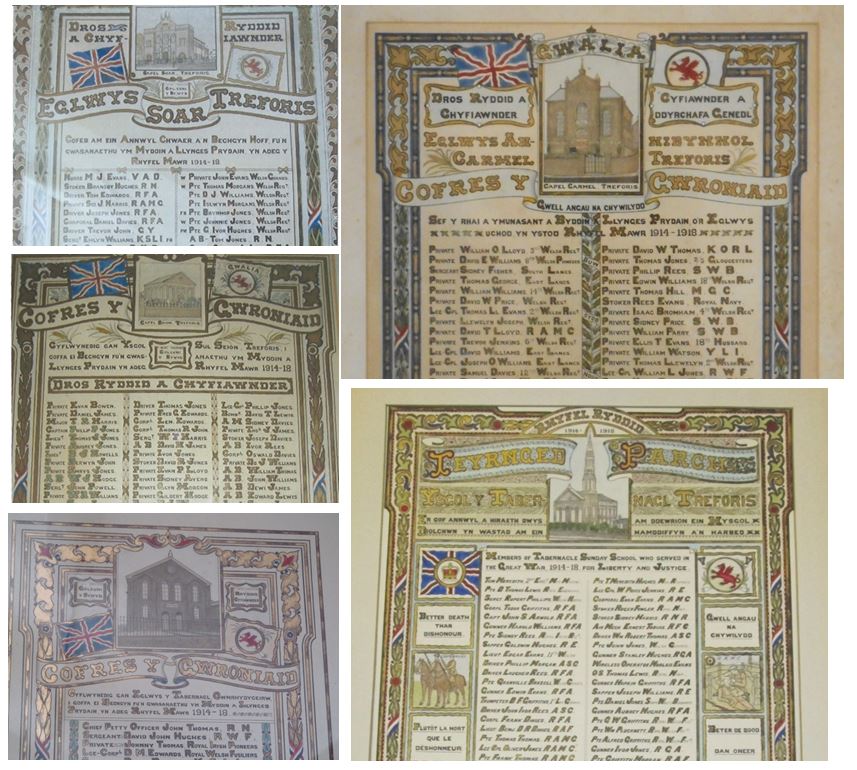
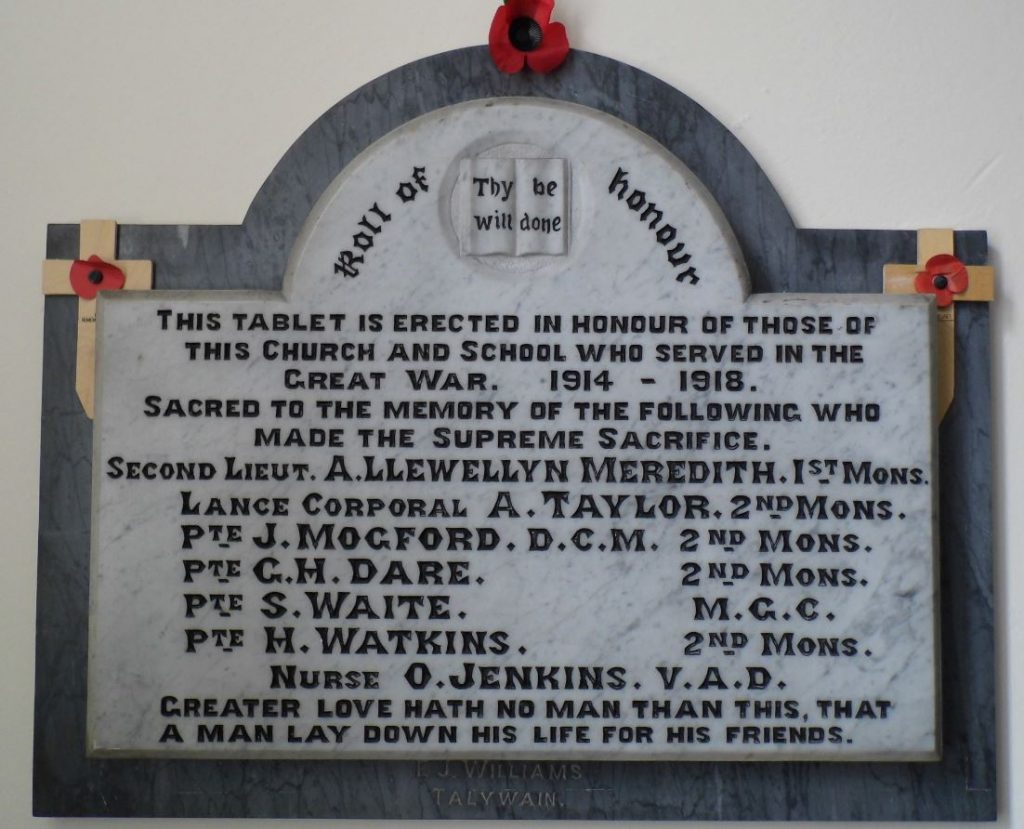
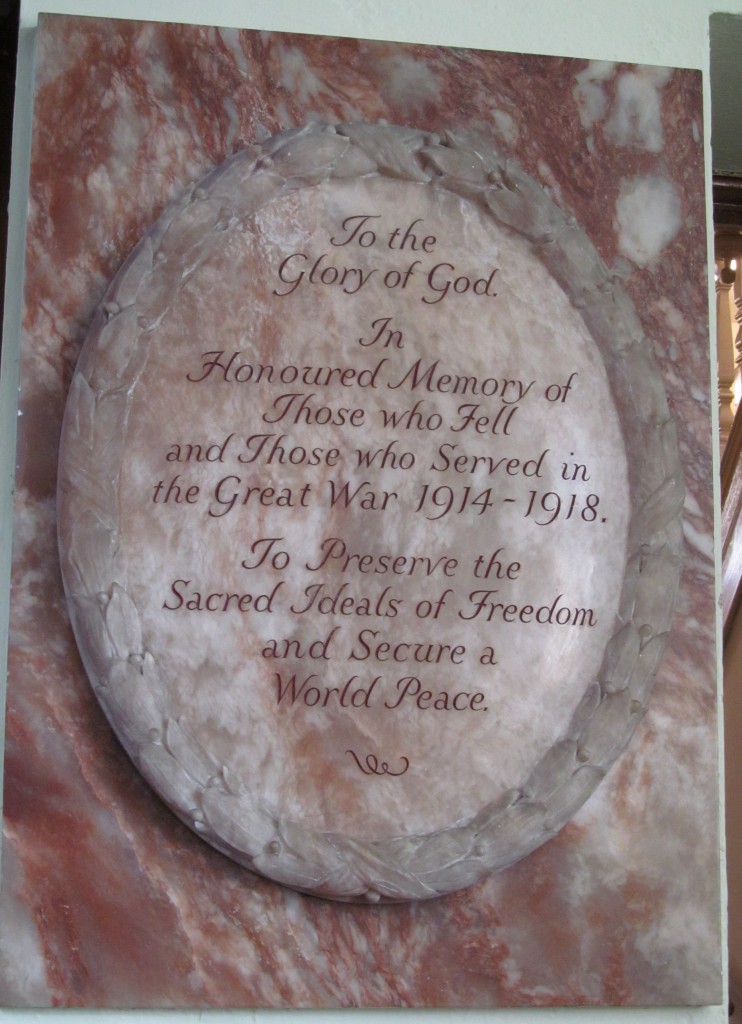
Having read this I thought it was rather enlightening. I appreciate you finding the
time and effort to put this content together.
I once again find myself personally spending a lot of time both
reading and commenting. But so what, it was still worth it!